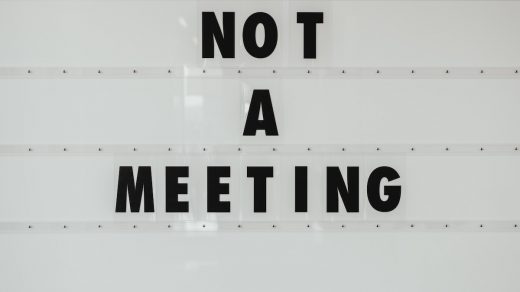In the wake of racial justice protests last summer, many businesses, nonprofits, and universities sought ways to address racial inequality in their organizations. Among the most common tactics was stepped up staff training on diversity, equity, and inclusion (DEI). DEI trainings vary in structure and substance, but they generally involve an external consultant talking through the social dynamics of bias and how society marginalizes groups based on race, gender, sexual orientation or other categories. Sometimes there are active discussions where employees talk about these power dynamics and how they play out in their organization. The idea is that by increasing everyone’s knowledge and awareness of systemic inequity, the training will reduce bias, alleviate historical inequities, and help people of all identities feel welcome and supported in an organization. Unfortunately, while there are relatively few rigorous studies on DEI training’s effectiveness, the available evidence suggests mandatory DEI training is not successful. Having frequently been involved in organizational decisions to spend thousands of dollars on similar initiatives, this is disappointing—but not surprising—news.
I find this dynamic deeply dissatisfying. Building a fair, inclusive workplace is mission-critical for progressive advocacy organizations that want their values reflected in their everyday practices, yet one of the most common (and expensive) solutions does not appear to help much. I’ve spent some time paging through the academic literature to understand why DEI trainings fall short— and more importantly, to figure out which alternatives might actually work. While the research remains thin, the available evidence suggests we are better off emphasizing cross-organizational task forces, transparent internal hiring processes, and specific recruiting practices, among other tactics. Large advocacy organizations will have more resources for everything, but even small organizations can shift to more effective DEI strategies.
Why Doesn’t DEI Training Work?
Before diving into what does work, I want to touch on a few theories about why diversity training does not appear to be effective. Here are some common perspectives, with links to research:
- Short-term training on any topic usually does not change workplace behavior.
- Changing an individual’s attitude does not necessarily change behavior.
- Teaching people about bias sometimes inadvertently triggers stereotyping. For example, going through the harmful litany of stereotypes of people of color may actually bring them to the front of a person’s mind.
- White employees and managers are resistant to and defensive about training.
- People are usually resistant to being told what to do, but take more ownership over processes where they have some power to shape the direction and outcome.
If you are interested in further reading, I’d recommend checking out these sources. This is not to say that there are never any positive effects or that we should not experiment with new approaches to DEI training to find ones that work. Part of the problem may be the training content itself. However, a concerted effort to create a fairer more inclusive workplace should emphasize tactics that demonstrate more promise.
What Works to Increase Diversity in Management Roles
While there is not a huge quantitative literature on what solutions actually work to create equitable and inclusive organizations, researchers Frank Dobbin and Alexandra Kalev frequently arise in coverage of the issue. They have done some of the most rigorous analysis on which organizational practices increase racial and gender diversity in management. Through multiple studies, Dobbin and Kalev have meticulously tracked several hundred businesses over the course of decades, documenting when a business tried a tactic to increase management diversity and what resulted.* The most effective solutions generate modest changes given the extremely small percentage of people of color in management roles during the 1970s, 80s, and 90s that the dataset covers. However, the following tactics seem to have real impact, sometimes resulting in as much as a 20 percent or greater increase among underrepresented minorities in management:
- Diversity Committees – Creating a task force of members from different departments and at different levels of the organization and assigning it responsibility for things like tracking data on diversity, identifying problem areas, and proposing solutions. This proved among the most consistently effective practices for moving women and people of color into management roles.
- Structured Mentorship – Offering formalized mentoring programs that assign junior staff mentors among more senior staff. Black, Hispanic, and Asian women in particular appeared to benefit more mentoring programs.
- Diversity Managers – Hiring a staff member or team—depending on the size of the organization—to ensure there are organizational resources consistently dedicated to implementing diversity initiatives and holding other managers accountable to DEI goals.
- Specific Recruiting – Encouraging managers to recruit women and minorities with targeted outreach efforts, such as joining career fairs at Historically Black Colleges and Universities.
- Open Internal Job Postings – Ensuring everyone in an organization is aware of job openings through a firmwide email or transparent company intranet.
- Job Ladders – Providing information about how to move up in the organizational ladder and which jobs are eligible for promotion to the next level.
- Affirmative Action Programs – Requiring managers to set goals for representation of women and minorities and make plans to achieve those goals. (There’s some mixed literature on how effective affirmative action programs are, but Dobbin and Kalev found they have positive effects over time.)
So What’s Going—And What Should Advocacy Organizations Take Away?
Dobbin and Kalev believe a pattern emerges from the data about what works and doesn’t when it comes to hiring and promoting women and people of color. Directives that constrain managers’ behavior such as mandatory training or internal grievance systems are not particularly effective at increasing diversity and may even backfire in certain cases. On the other hand, engaging managers in recruitment and mentoring may cause them to see themselves as someone who cares about diversity in hiring and promoting underrepresented minorities. Setting goals and assigning responsibility—whether as a group through a diversity task force, or as an individual diversity manager—can encourage managers to take on the problem as their own. And transparency about the hiring process can help break up “old boys’ networks” within the organization. In fact, Dobbin and Kalev do not suggest throwing DEI training out entirely: making training voluntary for those who are interested actually shows some benefit.
The main challenge in applying their recommended tactics to advocacy organizations is that smaller nonprofits may not have the resources to implement everything. Nevertheless, you do not need a very large organization to set up a Diversity, Equity and Inclusion committee** or to engage hiring managers in recruitment efforts targeted at underrepresented groups. For example, even small nonprofits can ensure their job descriptions appear on the job sites of professional organizations dedicated to jobseekers who are Black, Hispanic, women, or from other marginalized populations. As advocacy organizations grow, they should consider practices such as job ladders and mentoring programs. Larger, established organizations can and should support dedicated staffing for DEI initiatives. Groups of small advocacy organizations might also band together to create structured mentoring programs supported by common funders.
I would not consider the list above definitive in any sense. We need more rigorous research into interventions in hiring, pay, promotion, and engagement to learn more about what works to build diverse, equitable and inclusive organizations. Nor should we dismiss training entirely. Voluntary training seems to help as part of a broader DEI program, and there may be more effective ways to deliver training than we currently implement. However, the evidence merits emphasizing tactics like DEI committees as the centerpiece of organizational efforts to promote equity and inclusion. Advocacy organizations should focus their limited resources on the interventions most likely to work.
*The data speaks to racial and gender diversity and somewhat to organizational equity, but does not cover the concept of “inclusion.”
** While most companies in the studies cited here were mainly focused on increasing diversity in the 70s, 80s, and 90s, it seems reasonable to me to expand a committee’s focus to focus on building and equitable and inclusive organization as well.


